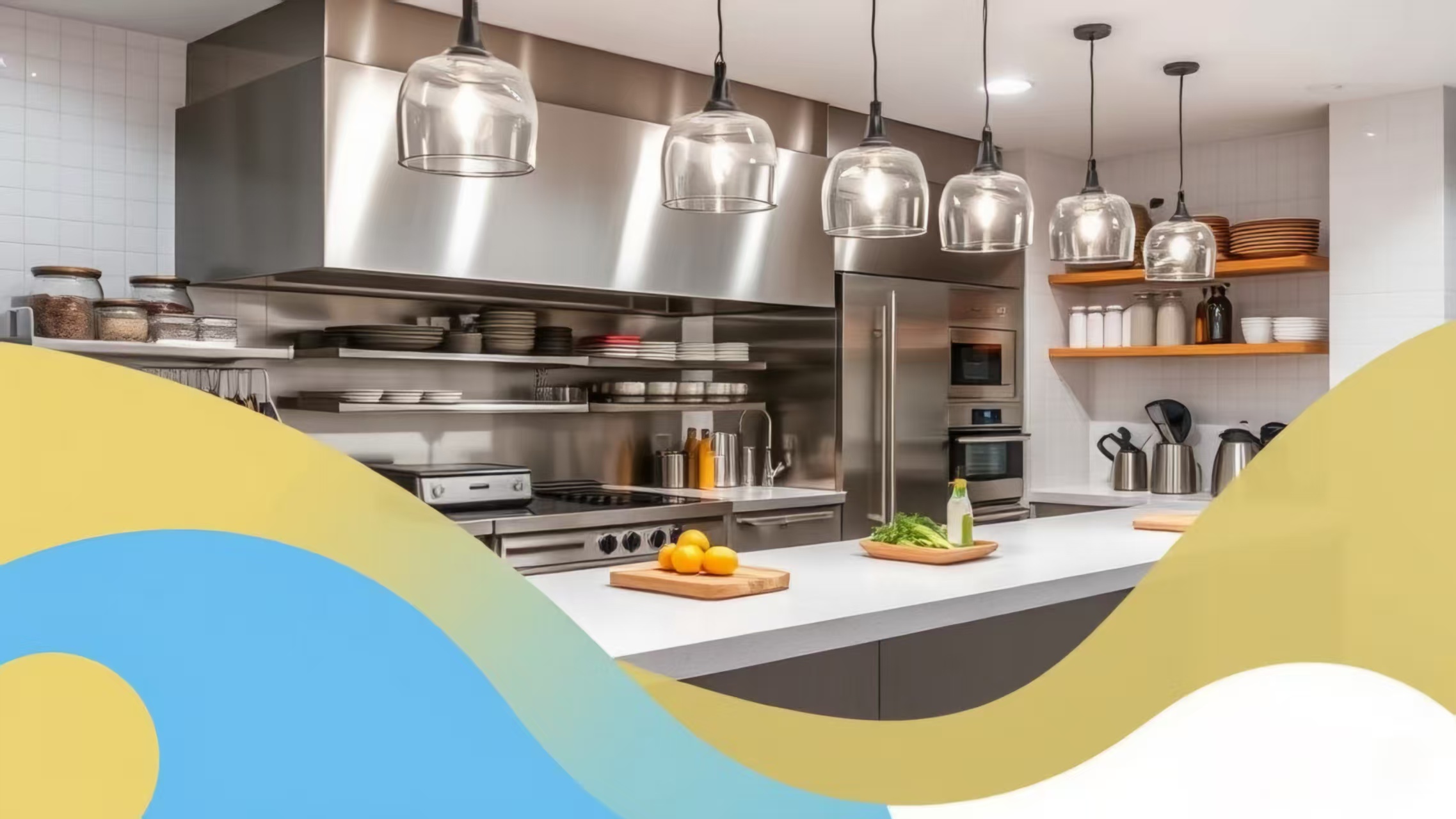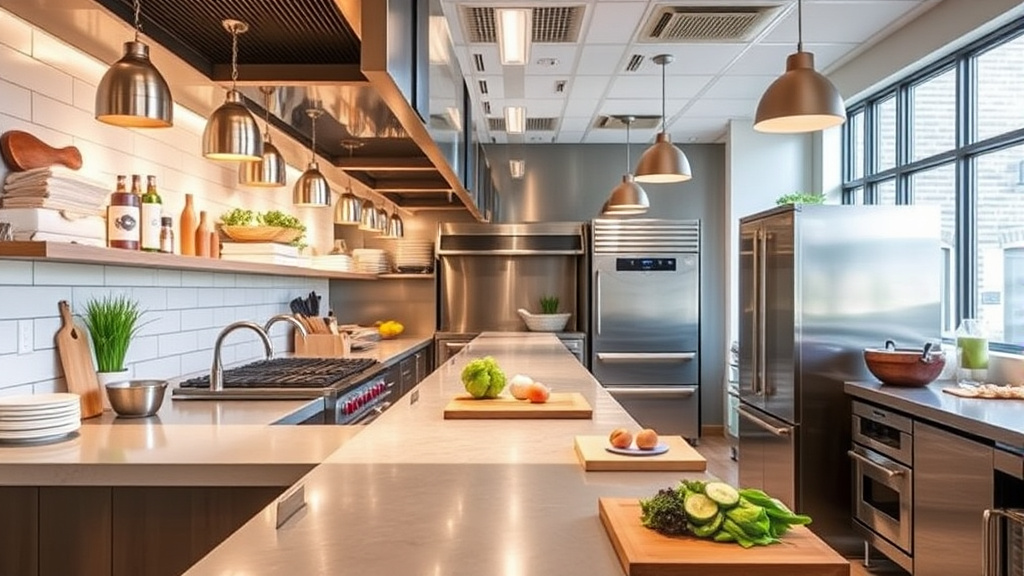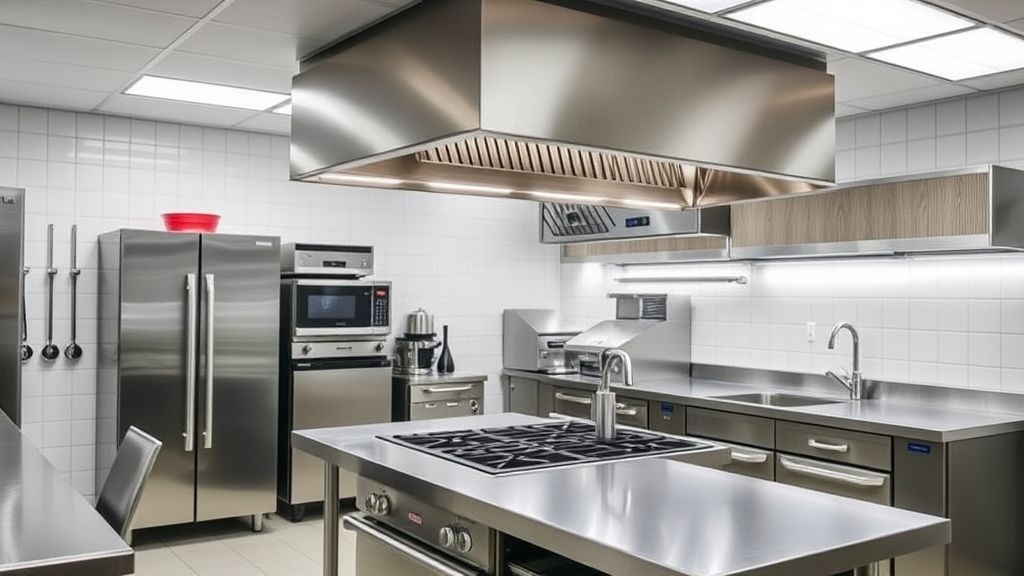Trends Shaping the Commercial Kitchen Industry in 2025

The food service industry is both a highly competitive market and a field brimming with opportunities and challenges. Businesses face numerous challenges to address, including high costs, excessive internal friction, customer traffic management issues, and quality control hurdles. First and foremost, high operational costs and internal friction remain common challenges for many commercial restaurants and hotels.

Hotel catering, a key sector in hospitality serving mid-to-high-end consumers, has evolved significantly in the 21st century. Driven by economic growth and rising living standards in developing regions, the market has shifted from group-based to mass consumption. Meanwhile, consumer preferences are increasingly focused on safe, healthy, and culturally meaningful dining experiences. Thus, specialty cuisine has become a core competitive advantage. Faced with intense competition, hotel caterers must strategically allocate limited resources to meet these evolving demands, presenting ongoing operational challenges.
Specifically, the catering industry should pay more attention to the following points!
- Improve energy efficiency to reduce the cost of energy consumption;
- Add intelligence to improve efficiency;
- Food safety and hygiene, in order to improve the level of food safety, enhance customer satisfaction;
- Durability, reduce equipment input cost.
First, let's talk about the energy efficiency paradox.
Commercial kitchen appliances primarily utilize gas and electricity as their main energy sources, with gas being the preferred choice when feasible. Traditional hotel stoves typically emit red flames due to inefficient combustion, causing substantial fuel waste. Energy-efficient stoves achieve complete combustion through blue flames.
In 2025, Grace's innovative commercial gas pot stoves demonstrated industry-leading energy efficiency. These advanced models integrate air premixing technology and three-way catalytic converters, optimizing gas-air ratios for optimal combustion. Besides, their core components convert thermal energy into infrared radiation, reaching 1100℃ combustion temperatures with 40-65% higher thermal efficiency than conventional stoves. By reducing nozzles to 0.9mm and employing tube-jet premixing atomization, the technology concentrates flame jets at the pot base, minimizing heat loss. This innovation reduces harmful emissions through oxidation-reduction reactions of CO, HC, and NOX, cutting carbon monoxide emissions by over 90% compared to standard stoves.
There are three types of commercial energy-saving stoves: burner-optimized models, furnace-optimized designs (including concentrated iron furnaces and infrared reflector furnaces), and airless combustion systems, with radiant heat accounting for 50-60% of total energy consumption.
While gas kitchen equipment is essential, energy efficiency becomes paramount for electric models, as electricity costs typically surpass gas expenses. The key lies in whether the appliance incorporates energy-saving design principles. When selecting equipment, opt for induction cooktops or induction cookers. Check for smart temperature control features – take Grace Kitchen's auto pasta cookers as an example. They feature constant temperature regulation, timed start-stop cycles, and automatic water replenishment. These innovations prevent energy waste from overheating (beyond boiling point) or dry burning, while minimizing human error in operation.

Next, we will talk about intelligent commercial kitchen equipment.
Taking the bakery and hotel kitchen units as examples, any baking operation requires a proofing chamber. Traditional proofing chambers either require manual temperature adjustment without refrigeration or have refrigeration functions without memory systems, leading to cumbersome operations and frequent errors. The Grace Kitchen 2025 new-proofing chamber truly achieves intelligent automation, freeing up labor while creating a more efficient proofing environment.
Featuring a color LCD for real-time monitoring of temperature, humidity, and time, the unit enables intuitive operation and precision control via smart temperature curves. Its three automatic proofing stages—chilling, thawing, and proofing—require no manual intervention. With auto water supply, timed proofing, interior lighting, central drainage, and swivel casters, it allows easy movement and cleaning.
Third, we should focus on food safety and sanitation.
This is the most crucial yet frequently overlooked aspect of the food service industry. Kitchen equipment layouts must comply with hygiene standards and facilitate daily cleaning and disinfection. Devices should be installed in easily accessible locations to eliminate hygiene blind spots, thereby ensuring food safety and sanitation.
- Food storage area: This area should meet the conditions of low temperature, dry and pollution-proof to ensure the freshness and safety of food. The classification storage location and method of food should be reasonably planned, and the temperature display should be equipped to monitor and record the temperature change regularly.
- Washing area: Set up cleaning basin, drying cabinet and other equipment, and choose dark washing basin to reduce the possibility of color difference and pollution. In addition, it is necessary to ensure that the drainage of the washing area is smooth to maintain the cleanliness and sanitation of the kitchen.
- Waste classification area: The design should fully consider the separation of food waste, non-food waste and recyclables, so as to carry out reasonable classification, treatment and recycling.
- Dishes cleaning area: set up a separate cleaning, drying and storage area, and pay attention to the classification of dishes, so as to carry out efficient classification, archiving and storage management.
In addition, there are some principles to pay special attention to in the selection of equipment.
1. Is the height of the bottom of vertical equipment reasonable?
For heavy and large vertical equipment such as vertical casserole stoves, direct floor installation is typically required. A stainless steel seal must be applied between the equipment and the ground, with edges rounded to prevent debris and wastewater from entering the base. The seal must completely cover all gaps. Lightweight equipment should be equipped with casters, and the clearance height should not be less than 15cm.
2. Is there a design with as many rounded corners as possible?
All internal and external corners should feature smooth rounded transitions (Coved Corners) to eliminate sharp 90-degree angles for easier cleaning. Gris Kitchenware's distinctive rounded-edge design – a key differentiator from conventional products – addresses this requirement. Our range of kitchen appliances including Western-style casserole stoves, volcanic stone grills, deep fryers, and noodle cookers all incorporate multi-directional rounded edges for enhanced user experience.
3.Is it corrosion resistant food grade stainless steel?
All food contact surfaces must use 304 or 316 stainless steel, ideally with #4 brushed or polished finishes for easy cleaning and visual appeal. Grace Kitchen adheres to strict material standards and considers each client's operational environment, including humidity and alkalinity. For coastal locations, we provide premium, corrosion-resistant stainless steel, meticulously polished to ensure durability and hygiene.
4. Are special food equipment dedicated rather than mixed?
Functional zones: Avoid cross-contamination or cross-contamination. For example, the universal steam oven of Gris Kitchenware has different shelves so that different foods can be cooked at the same time without affecting each other.
Special equipment: Special cutting machines, mixers and other working components are provided for allergenic foods (such as seafood and nuts), and are clearly marked.
Waterproof design: The equipment should be designed to prevent water, condensate or grease from dripping from one place to another food or surface.
Finally, let's talk about the durability of commercial kitchen equipment.
Commercial kitchen equipment requires electrical components with high corrosion and weather resistance, unlike household appliances. In line with this, Grace Kitchen upgraded its equipment by the end of 2024. Key improvements include switching the refrigeration worktop to a premium international brand, increasing stainless steel thickness to 2.0mm on working surfaces, and widening the cold cabinet seal from 18mm to 25mm with reinforced magnetic sealing—significantly enhancing durability and service life.
On October 15,2025, we will show new products in the Canton Fair, then you will see the latest development trend and the latest innovation achievements of commercial kitchen equipment. Welcome to our booth for communication.
Want to see these trends in action? Visit us at Canton Fair to learn more.